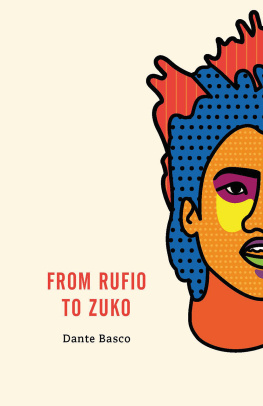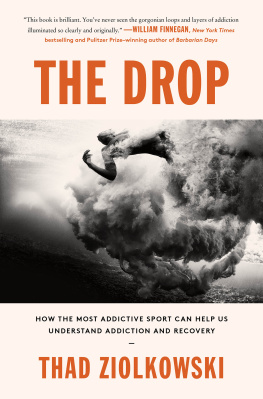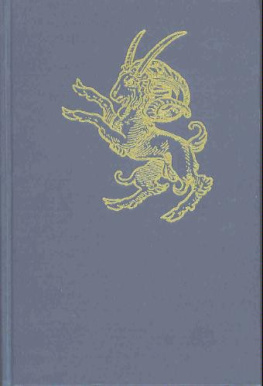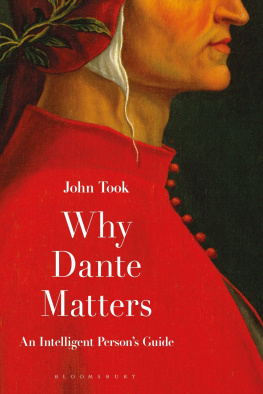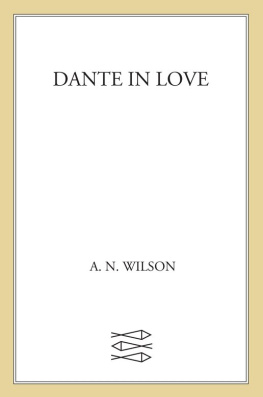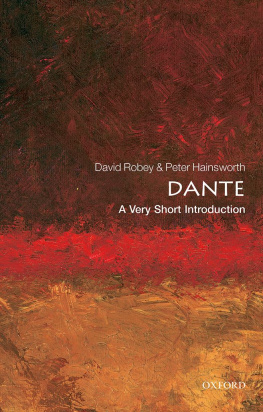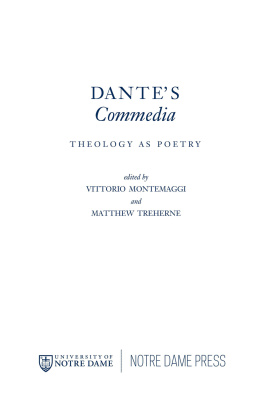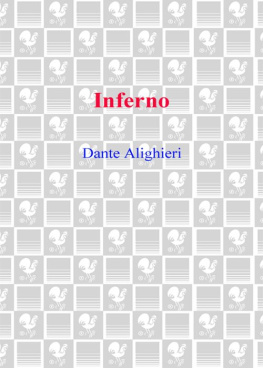Ziolkowski - Dante and Islam
Here you can read online Ziolkowski - Dante and Islam full text of the book (entire story) in english for free. Download pdf and epub, get meaning, cover and reviews about this ebook. City: New York, year: 2015, publisher: Fordham University Press, genre: Religion. Description of the work, (preface) as well as reviews are available. Best literature library LitArk.com created for fans of good reading and offers a wide selection of genres:
Romance novel
Science fiction
Adventure
Detective
Science
History
Home and family
Prose
Art
Politics
Computer
Non-fiction
Religion
Business
Children
Humor
Choose a favorite category and find really read worthwhile books. Enjoy immersion in the world of imagination, feel the emotions of the characters or learn something new for yourself, make an fascinating discovery.

- Book:Dante and Islam
- Author:
- Publisher:Fordham University Press
- Genre:
- Year:2015
- City:New York
- Rating:4 / 5
- Favourites:Add to favourites
- Your mark:
- 80
- 1
- 2
- 3
- 4
- 5
Dante and Islam: summary, description and annotation
We offer to read an annotation, description, summary or preface (depends on what the author of the book "Dante and Islam" wrote himself). If you haven't found the necessary information about the book — write in the comments, we will try to find it.
Dante and Islam — read online for free the complete book (whole text) full work
Below is the text of the book, divided by pages. System saving the place of the last page read, allows you to conveniently read the book "Dante and Islam" online for free, without having to search again every time where you left off. Put a bookmark, and you can go to the page where you finished reading at any time.
Font size:
Interval:
Bookmark:
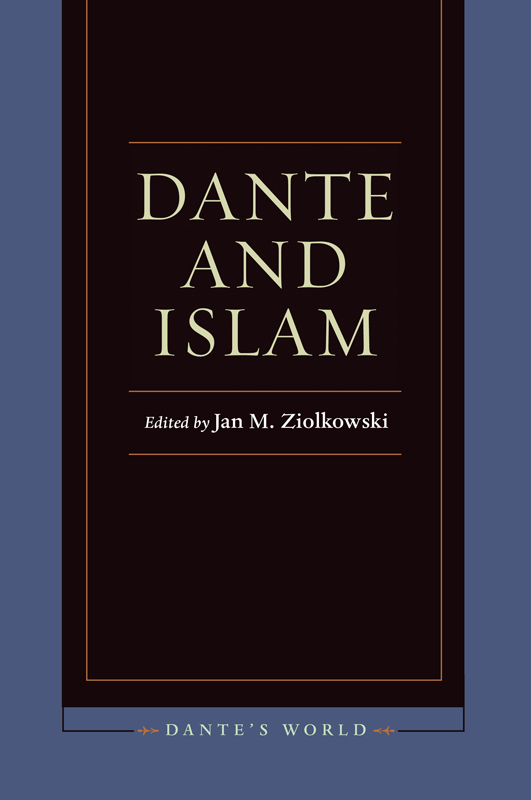
DANTE AND ISLAM
DANTES WORLD: HISTORICIZING LITERARY CULTURES OF THE DUE AND TRECENTO
Teodolinda Barolini, series editor
Series Board:
Maria Luisa Ardizzone
Albert Russell Ascoli
H. Wayne Storey
Jan M. Ziolkowski
This series publishes innovative and original work of a historicist bent on cultural and literary figures and intellectual currents of thirteenth- and fourteenth-century Italy.
Dantes World embraces work on all aspects of the literary cultures thriving on the Italian peninsula in the two centuries straddled by Dantes life. The series treats authors from Giacomo da Lentini and Guido Cavalcanti to Boccaccio and Petrarca. Books in the series consider theological, social, historical, economic, and philological topics and explore gender, rhetoric, and material culture.
Although this series extends well beyond Dante, at its methodological core is an attempt to reverse the essentialism that has been an abiding feature of Dante exegesis. Against that tradition, Dantes World brings together a body of critical readings that are historically engaged and hermeneutically complex.

Copyright 2015 Fordham University Press
All rights reserved. No part of this publication may be reproduced, stored in a retrieval system, or transmitted in any form or by any meanselectronic, mechanical, photocopy, recording, or any otherexcept for brief quotations in printed reviews, without the prior permission of the publisher.
Fordham University Press has no responsibility for the persistence or accuracy of URLs for external or third-party Internet websites referred to in this publication and does not guarantee that any content on such websites is, or will remain, accurate or appropriate.
Fordham University Press also publishes its books in a variety of electronic formats. Some content that appears in print may not be available in electronic books.
Visit us online at www.fordhampress.com.
Library of Congress Cataloging-in-Publication Data is available from the publisher.
Printed in the United States of America
17 16 15 5 4 3 2 1
First edition
Contents
JAN ZIOLKOWSKI
VICENTE CANTARINO (1965)
MARIA CORTI (1999)
JOS MARTNEZ GZQUEZ
THOMAS E. BURMAN
BRENDA DEEN SCHILDGEN
GREGORY B. STONE
DANIELA BOCCASSINI
MARIA ESPOSITO FRANK
KARLA MALLETTE
JOHN TOLAN
GIORGIO BATTISTONI
DAVID ABULAFIA
DANTE AND ISLAM
JAN M. ZIOLKOWSKI
The title of this collection is not a wild novelty, because since 1921 the wording Dante and Islam has been pressed into service repeatedly in various languages as a heading for books, articles, and book reviews.
By exemplifying what is Western, Christian, and Catholic, the Commedia exerts in the early twenty-first century a force far beyond what one might expect an early fourteenth-century literary composition still to radiate in a world that is caught up more in the present than in the distant past. For nearly a century controversies have boiled over repeatedly as to what the poem signifies about the perspectives of medieval Christians on Muslims. Nor have the disputes been restricted to what the Commedia meant in its own day. Dantes chef doeuvre and the iconographic tradition based upon it have also incited powerful reactions from Muslims even in the last few years.
An extreme instance of hostility toward Dantes poem is the arrest in 2002 of alleged Islamic terrorists who were charged with plotting to blow up the Basilica of San Petronio in Bologna so as to destroy a fresco of the Last Judgment (1409) by Giovanni da Modena (flourished 14091456), which contains an illustration of Muammad being consigned to the flames of Hell that was inspired by Dantes Inferno .
As such episodes demonstrate, the Commedia prompts responses that cover a broad swath. On the one hand, it enjoys approbation nowadays as a preeminent work not just of European literature in general but of Christian literature in particular. In this capacity it could be situated at one end of the spectrum by those who view medieval encounters between Christianity and Islam as being the starting points in an ongoing clash of civilizations.
On the other hand, alternative interpretations of Dantes poem not merely acknowledge but even emphasizeperhaps overemphasizeevidence that speaks on behalf of Islamic influences and that allows for the feasibility of peaceful coexistence between Muslims and Christians. Among such readings, one takes the seemingly contradictory tack of simultaneously admitting that Dante dooms Muammad to the torments of Inferno but also of avowing that the Commedia formulates religious pluralism that may rightly be called Islamicthat the philosophy of religion that is one of the fundamental components of the Commedia a discourse aiming to foster tolerance for religious and cultural diversitywas in large part a legacy of the Arabo-Islamic philosophical tradition.
Convivencia (which could be translated roughly as coexistence) sums up the peaceful cohabitation that in the right places and times prevailed in the Middle Ages among Christianity, Judaism, and Islam. The word has entered ever more common usage since its introduction by the Spanish philologist and historian Amrico Castro (18851972) in the 1940s.
Within these eight hundred years, three particularly noteworthy centuries run from 711 to 1031, while the Umayyad caliphate was installed at Crdoba. The Mozarabs, as are styled the Christians who dwelled under Islamic rule in al-Andalus, adopted ways of life practiced by the Muslims, and these Christians helped to bridge the chasm between the religions and cultures. Taken to an extreme, the concept of convivencia could be enlisted to uphold a contrast between a hidebound and almost belligerently backward Latin Christendom and a benign and tolerant Muslim world in which a pax Islamica an Islamic peaceheld sway.
Nothing should prevent us from applying the modern Italian cognate convivenza to similar effect, to denote comparable conditions of peaceable cohabitation on the southern Italian peninsula and on Sicily, if in fact they obtained there. Muslims not only ruled Sicily for some two hundred years but also abided long afterward as a cultural force under the Normans who supplanted them.
Such evidence can cutor can be cutin entirely opposite ways. As the concluding essay in this volume (by David Abulafia) demonstrates, surviving Muslims from Sicily were eventually transported to the mainland and collected in a settlement that endured for decades. Thus the persistence of the Muslim community known as Lucera Saracenorum (Lucera of the Saracens) on the Italian mainland through the end of the thirteenth century could be construed as important confirmation that not only Spain but Italy too had a continuing Muslim presence. Yet the town could be regarded less optimistically as a sort of concentration camp avant la lettre , and the dispersal of its inhabitants in 1300 (a date not without significance in the appreciation of Dantes Commedia , since it is the year in which the action is supposed to have taken place) bespeaks at least to some degree an antagonism toward Islam on the peninsula.
Lucera Saracenorum constitutes a microcosm of the Muslim foothold in Italy. Saracens occupied Sicily and parts of the mainland for most of three centuries, namely, the ninth, tenth, and eleventh. Montecassino, the renowned monastery where Benedict set down his still more famous rule for monastic communal living, had to be abandoned after being sacked and burned by Muslim raiders in 883. In the twelfth, thirteenth, and fourteenth centuries the disruptions of the earlier centuries found compensation, as innovations were enabled thanks to contact with Islamic civilization through the Crusades and Norman Sicily. The Normans inhabited southern Italy cheek by jowl with the Muslims, and they created a dominion over a nearly completely Muslim population. In Sicily the juxtaposition and fusion of cultures led to spectacular outcomes in art, architecture, literature, and other fields. The Palermitan court of King Roger II (10951154) intensified a cultural symbiosis between Islam and Christianity that reached its apogee under Frederick II (d. 1250).
Font size:
Interval:
Bookmark:
Similar books «Dante and Islam»
Look at similar books to Dante and Islam. We have selected literature similar in name and meaning in the hope of providing readers with more options to find new, interesting, not yet read works.
Discussion, reviews of the book Dante and Islam and just readers' own opinions. Leave your comments, write what you think about the work, its meaning or the main characters. Specify what exactly you liked and what you didn't like, and why you think so.



